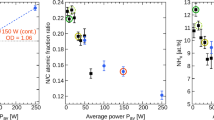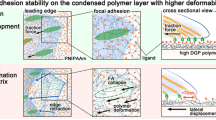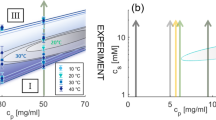Abstract
Reaggregation and agglutination of cells in vitro have served extensively as model systems in the evaluation of various adhesion phenomena that occur in vivo. Such studies have revealed factors that influence cell aggregation1–3, but the mechanism involved at the molecular level has not been investigated fully. In the agglutination of trypsin-treated and virus-transformed cells by concanavalin A, intercellular cross-linking of receptors by the plant lectin is believed to be necessary after ionic repulsion4,5. The adhesion of cells may not, however, depend exclusively on the formation of cross links6. Hydrophobic inieraction is known to be involved in the aggregation of cell surface components7, in the solution behaviour of proteins8 and in adsorption9, but its contribution to adhesion involving a biological surface has not been considered. This is chiefly because of the difficulty of demonstrating experimentally, by conventional techniques, that hydrophobic interaction can indeed contribute to any significant extent and result in adhesion. I describe here the use of a reactive polyurethane prepolymer to evaluate the conditions required for adhesion to the surface of connective tissue due to hydrophobic interaction.
This is a preview of subscription content, access via your institution
Access options
Subscribe to this journal
Receive 51 print issues and online access
$199.00 per year
only $3.90 per issue
Buy this article
- Purchase on Springer Link
- Instant access to full article PDF
Prices may be subject to local taxes which are calculated during checkout
Similar content being viewed by others
References
Humphreys, T., Symp. zool. Soc. Lond., 25, 325 (1970).
Pessac, B., and Defendi, V., Nature new Biol., 238, 13 (1972).
Curtis, A. S. G., and de Sousa, M., Nature new Biol., 244, 45 (1973).
Nicolson, G. L., Nature new Biol., 239, 193 (1972).
de Petris, S., Raff, M. C., and Mallucci, I., Nature new Biol., 244, 275 (1973).
Wilkins, D. J., Ottewill, R. H., and Bangham, A. D., J. theor. Biol., 2, 176 (1962).
Singer, S. J., and Nicolson, G. L., Science, 175, 720 (1972).
Dandliker, W. B., and de Saussure, V. A., in The chemistry of biosurfaces, (edit. by Hair, M. L.), 1, 25 (Dekker, New York, 1971).
Hansch, D., and Helmer, F., J. Polym. Sci., 6, 3295 (1968).
Llewellyn-Thomas, E., Wang, P. Y., and Vinals, J. N., Biomat. Med. Dev. Art. Org., 1, 507 (1973).
Saunders, J. H., and Frisch, K. C., Polyurethane: II. technology, 611 (Interscience, New York, 1964).
Becher, P., Emulsions: theory and practice, 242 (Reinhold, New York, 1965).
Schick, A. F., and Singer, S. J., J. biol. Chem., 236, 2477 (1961).
Gaunt, W. E., and Wormall, A., Biochem. J., 30, 1915 (1936).
Wilkinson, P. C., and McKay, I. C., Int. Arch. Allergy, 41, 237 (1971).
Wilkinson, P. C., and McKay, I. C., Eur. J. Immun., 2, 507 (1972).
Frye, L. D., and Edidin, M., J. Cell Sci., 7, 319 (1970).
Yamada, T., and Yamada, M., Nature, 244, 297 (1973).
Author information
Authors and Affiliations
Rights and permissions
About this article
Cite this article
WANG, P. Evidence of hydrophobic interaction in adhesion to tissue. Nature 249, 367–368 (1974). https://doi.org/10.1038/249367a0
Received:
Revised:
Issue Date:
DOI: https://doi.org/10.1038/249367a0
Comments
By submitting a comment you agree to abide by our Terms and Community Guidelines. If you find something abusive or that does not comply with our terms or guidelines please flag it as inappropriate.



